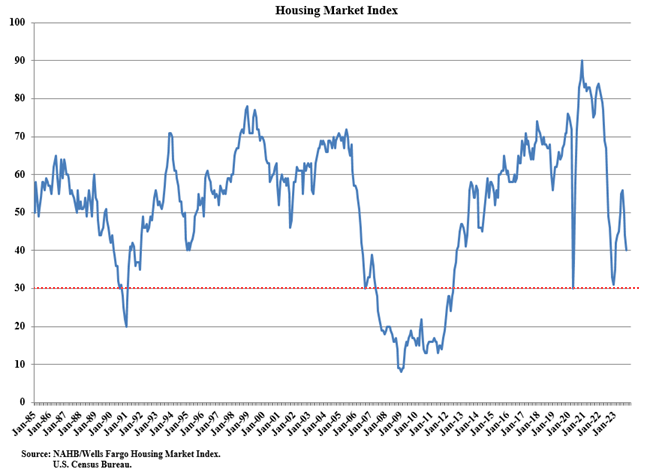Monthly core PCE — the Fed’s favorite measure of underlying inflation — jumped by 0.416% or 5.0% annualized.

Annual figures are still declining, including the Trimmed Mean PCE which declined to 3.2%.

The 3-month (orange) and 6-month (gray) moving averages have turned upwards but not yet crossed the descending annual line (red).

Services PCE — which tends to be the most persistent inflation — jumped even higher in January, reaching 0.596% or 7.2% annualized.

The 3-month (yellow) and 6-month (gray) moving averages have crossed above the descending annual line (orange), warning of a trend reversal.

The resilient US economy warns that the spike in January inflation may not be an anomaly. Financial conditions remain easy, with the Chicago Fed index at a low -0.518.

Real personal disposable income per capita declined slightly in January but remains in an up-trend.

Real retail sales are on trend.

The labor market is tight, with job openings exceeding unemployment by close to 3 million.

Container rail freight (blue) has been climbing since Q2 of last year.

Heavy truck sales rebounded in January after weakness in September-October last year.

Gold
Gold jumped to $2044 per ounce on higher inflation expectations. Another test of $2060 is likely.

Conclusion
January core PCE warns that inflation is not dead and is likely to rebound in 2024. Easy financial conditions underpin a robust recovery, with a tight labor market, retail sales at trend, and signs of improving economic activity.
The economy is likely to remain robust for as long as Treasury floods financial markets with liquidity — ahead of the November elections.
A resurgence of inflation would increase pressure on the Fed to hold rates steady for longer. Further rate rises are unlikely — unless there is a massive spike in PCE inflation — but it is also possible that we don’t see rate cuts before the fourth quarter.




























